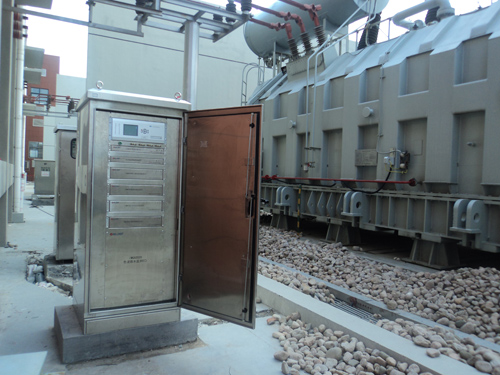Products List
 On-line+
On-line+- HNPBL-1000
- HNPDM-1802
- HNPJF-1500B
- HNPRT-18B
- HNPRX-1000B
- HNPRX-1000C
- HNPSE1000
 Portable+
Portable+- A-B SF6
Contact Us
Products Name:

System Overview
The transformer DC magnetic bias monitoring system can monitor the DC magnetic bias at the neutral point of the transformer in real time, and once DC over-standard at the neutral point of the transformer occurs (this system can be extended to monitor the vibration and noise of the transformer), the operator can take measures such as load reduction to prevent major failure of the transformer and system. An open-loop current sensor is adopted for current detection of the system to achieve fully isolated sampling mode, and the advanced microprocessor technology and unique transient parameter testing technology are used for linear processing and calculation; with extremely high reliability and safety and relative cheap price, this system can be installed in each transformer for real-time detection to achieve centralized monitoring.
Technical Indexes
Working environment
Working voltage: AC 220V±10%, 50Hz,<5W
Ambient temperature: -40°C ~ +70°C
Ambient humidity: ≤95%RH
Monitoring parameters
Measured value: DC (average value), AC/DC valid value
Measurement range of current: AC/DC, peak 0~200A
Measurement accuracy: 1%
Resolution: 0.05%
Data measurement speed: once/second
Other technical indexes
System capacity: 80 local modules
CAN network structure – network rate:<500Kbps
RS485 structure – network rate: ≤2400bps
The life cycle of the system is 10 years or more.
Function Features
Continuously monitoring and recording AC/DC flowing through the neutral point of the transformer in real time, judging the status of the equipment monitored, and alerting of potential faults.
With transient over-voltage protection measures, there is no influence on safety operation of the equipment on site, and it shall be ensured that the down conductor is grounded reliably to meet the corresponding through-current capability.
Automatic acquisition of equipment status parameters, signal conditioning, analog-digital conversion, data pre-processing, and transmission to the upper unit.
Acceptance of control commands transmitted by the upper unit, such as parameter configuration, data calling, time synchronization and forced restart.



